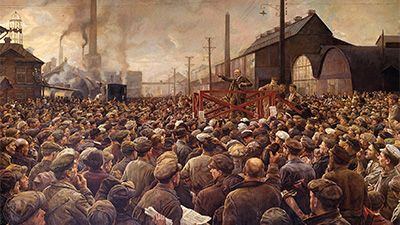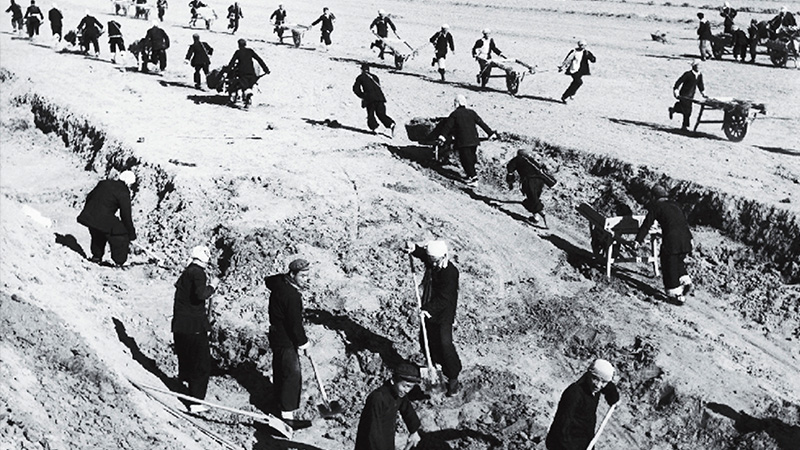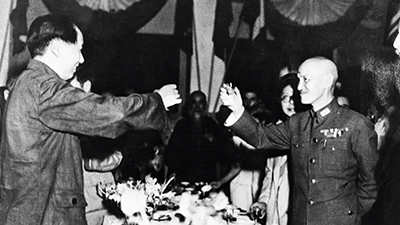The Spread of Communism After 1900
Teacher Resources
Driving Question: What factors led to China’s adoption of communism, and how did this transformation impact China and the world?
This lesson follows the rise of communism in China and Latin America from the aftermath of World War II through the Chinese Communist Revolution led by Mao Zedong. It highlights the struggle between nationalist and communist factions, the relationship between different socialist movements, the impact of communist policies on China and Latin America, and the challenges and achievements of these policies.
Learning Objectives
- Explain the causes and consequences of China’s adoption of communism.
- Explain the causes and effects of movements to redistribute economic resources.
- Use quick-sourcing skills to evaluate the causes and consequences of the spread of communist states.
Vocab Terms:
- class war
- communes
- containment
- imperial
- redistribution
- socialist
Opener: The Spread of Communism After 1900
To teach this lesson step, refer to page 3 of the Lesson 8.4 Teaching Guide.
China was a major player in the Cold War and decolonization struggles of this period. Use image analysis to begin engaging with the Chinese Communist Revolution.
Seeing Red Slideshow
The Spread of Communism
To teach this lesson step, refer to page 3 of the Lesson 8.4 Teaching Guide.
Following the Russian Revolution, industrialized Europe managed to contain the spread of communism, but this ideology proved more popular in agrarian societies around the world. China and Latin America offer two contrasting stories of the global spread of communism during the interwar period.
-
Guiding Questions
-
Before you read
Preview the questions below, and then skim the article. Be sure to look at the section headings and any images.
While you read
Look for answers to these questions:
- Why did communism appeal to many people in China and Latin America in the period between the First and Second World Wars?
- Who were the Guomindang (GMD) and how did they come to power in 1911?
- Why did the communist party, led by Mao Zedong, win the civil war in China?
- What caused communism and other radical ideas to grow in Latin America in the early twentieth century?
- What was US policy in Latin America in the 1910s and 1920s, and how did it change in the 1930s?
- Who were the populists in Latin America in the 1930s, and what happened to them?
After you read
Respond to the following questions:
- How does this article explain the causes and consequences of why some nations adopted communism?
- From this article, what elements of the story of communism seem to be similar in China and Latin America in the first half of the twentieth century? What elements seem to be different?
Chinese Communist Revolution
To teach this lesson step, refer to page 4 of the Lesson 8.4 Teaching Guide.
Looking for more resources to teach the Chinese Communist Revolution. Read Mao, Mangoes, and China’s Cultural Revolution in the Community.
The Chinese Communist Revolution was a transformational event in both Chinese history and the global history of revolutions—explore why in this video.
-
Guiding Questions
-
Before you watch
Preview the questions below, and then review the transcript.
While you watch
Look for answers to these questions:
- According to Francesca, what is the difference between liberal and social revolutions?
- What were the two parties that, during the 1920s and 1930s, sought to lead China, and what were their goals?
- According to Dr. Prasenjit Duara, what were the internal and external inspirations for the Chinese Communist Revolution?
- According to Dr. Duara, how did the Chinese Communist Party’s response to the Japanese occupation help them to win the revolution?
- According to Dr. Duara, can we call the Chinese Communist Revolution part of an anticolonial struggle? Why or why not?
- What were the successes and failures of the revolution, according to Dr. Duara?
After you watch
Respond to the following questions:
- Using evidence from this video, explain the causes and consequences of China’s adoption of communism.
- Consider the Chinese Communist Revolution alongside the earlier revolutions you’ve encountered. Which would you label social revolutions? Which were liberal political revolutions? Which were both?
- How does the Chinese Communist Revolution demonstrate the ways in which the Cold War and decolonization were intertwined?
Key Ideas
Source Collection: Communism
To teach this lesson step, refer to page 6 of the Lesson 8.4 Teaching Guide.
Curious about how other teachers approach sourcing? Look at this Community Forum thread on Sourcing Practice.
Communism resulted in many upheavals around the world in the twentieth century. Using primary sources, you will analyze the causes and consequences associated with these upheavals. We recommend using the Quick-Sourcing Tool to help you analyze these sources.
Closer: The Spread of Communism After 1900
To teach this lesson step, refer to page 6 of the Lesson 8.4 Teaching Guide.
Use your causation and contextualization skills to assess the Chinese Communist Revolution.
Chinese Communist Revolution
To teach this lesson step, refer to page 6 of the Lesson 8.4 Teaching Guide.
Although China was never fully colonized, its communist revolution was as much anti-imperialist as it was pro-communist.
-
Guiding Questions
-
Before you read
Preview the questions below, and then skim the article. Be sure to look at the section headings and any images.
While you read
Look for answers to these questions:
- Most of China was never formally colonized. So why has twentieth-century China seen itself as so engaged in a struggle against imperialism and colonialism?
- How did relations between the nationalist Guomindang (GMD) and the Communist Party of China (CPC) change between 1921 and 1949?
- What were the main policies of the communists under Mao Zedong, once they came to power?
- What was the goal of the Great Leap Forward, and did it succeed, according to the author?
- What was the goal of the Cultural Revolution, and did it succeed, according to the author?
- China is a communist power. Was it a Soviet ally during the Cold War?
After you read
Respond to the following questions:
- To what extent does this article explain the causes and effects of the rise of communism in China?
- The author argues that, despite never formally being colonized, much of China’s recent history has been guided by an anti-imperial mindset. Do you believe she has proven her argument in this article? Why or why not?
- In the 1950s, China asserted control over Tibet. More recently, China has tried to force its Muslim citizens into being more “culturally” similar to the majority of the country. The government is also trying to enforce its rule in Hong Kong, which was a British colony until recently and most of whose population opposes many of the policies of the Chinese government. Does this evidence suggest that China is an imperial power, today?











